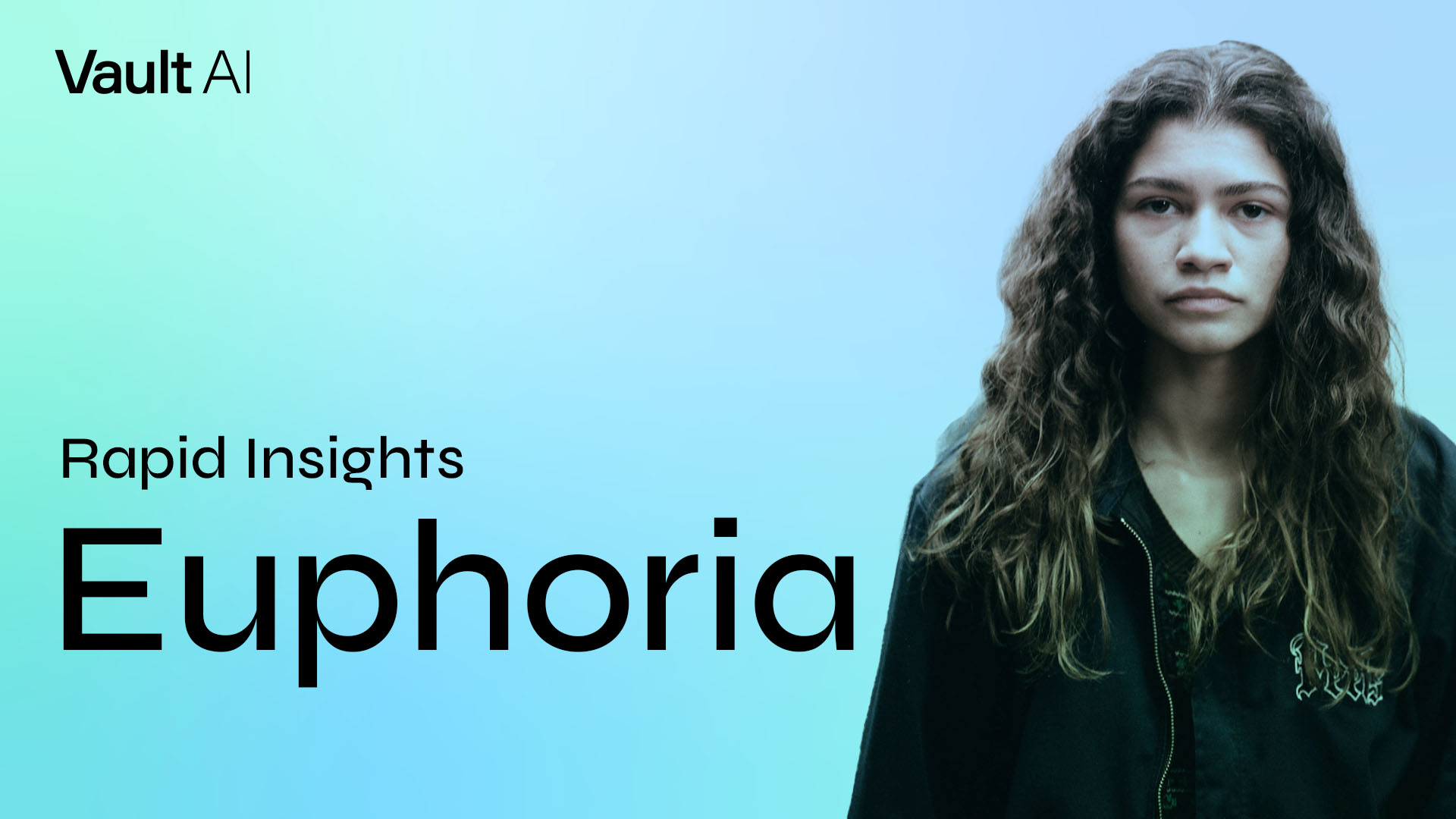Rapid Insights: Euphoria’s Still Flying High
Already a breakout hit, HBO’s intensely compelling teen drama has nearly doubled in ratings with the recent premiere of its much-talked-about second season. Here’s what you need to know about Euphoria’s first season:
How did Euphoria’s audience compare to other teenage coming-of-age dramas?
It’s older. While all shows in this genre tend to skew female, Euphoria’s intense, hard-R content attracts more adults (71% aged 35+) than shows like Gossip Girl, Love, Victor, and Sex Education (all roughly 50% under age 30).
What’s different about the social buzz around the newest season?
It’s significantly more popular. While Season 1 social tracking was strong, there were ups and downs throughout its release, whereas online chatter for Season 2 hit our max of 160 with the premiere and hasn’t dropped since.
What element most drove viewers to tweet about the show?
Nate and Maddy’s Abusive Relationship (143). Their unhealthy and turbulent teen romance propels the story’s emotional extremes (swinging from Ecstasy to Loathing) that help amp up the online social chatter.
Which character’s journey did audiences find most engaging overall?
Rue (played by Zendaya). Her role as an LGBTQ+ Protagonist (146) exploring her sexual identity as well as her battle with Alcohol & Drug Abuse (133) makes her the heavyweight contributor to the show’s stellar ratings.
What makes the first season so bingeable?
It’s no-holds-barred depiction of Teen Life (136). The show’s multi-faceted portrayals of Teen Romance (130), teen Sexual Promiscuity (130), and the complicated ordeal of growing up keep viewers coming back for more.
Does the show’s explicit sexuality help or harm its reputation?
Help. The series’ varied depictions of Sexual Activity (135) served as a key ratings driver in season 1, and the core characters’ overpowering desire for sexual contact contributes to longevity (Physical Activity (113)).
–
Visit StoryGuide for more details and analysis – Sign up for StoryGuide


